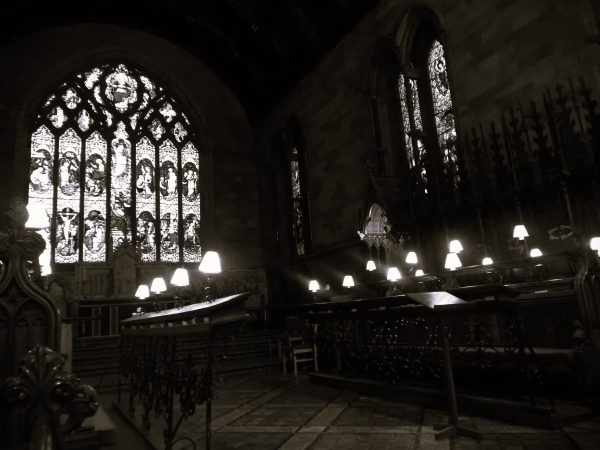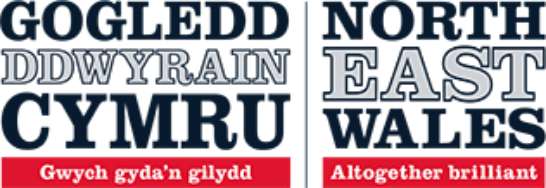Llanelwy (St Asaph) Cathedral
This is our second walk from our guest blogger Julie Brominicks the author of The Edge of Cymru. They are all accessible by public transport and each one will have a simple map for you to follow. We have another 6 planned for you over the next few months, so look out for them on our social media channels. We want to inspire you explore our beautiful part of the world that little bit deeper.
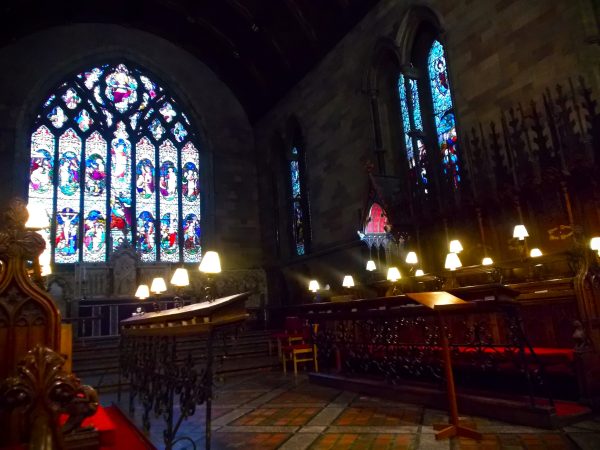
It smells like spice, this cosy ecclesiastical embrace – no airy vaulted limestone here. Instead, warm red sandstone boasts the full biscuity gamut of autumnal tones from Malted Milk (fine-grained stone from Flint or Talacre) to the almost-purple of a Bourbon, quarried from just two miles away. Silence sings. Candles flicker and lamps above the canopied choir stalls emit a buttery light.

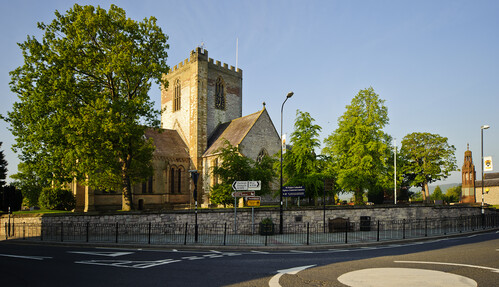


The cathedral is generally peaceful nowadays, but it has not always been so.
Dating to the sixth century and associated by legend with saints Kentigern and Asaph, its early structures would have been wooden. These were replaced by the Normans, (whose invasion was blessed by the Pope) who brought stone building methods and religious ideas with them. In 1120 they made Llanelwy a diocese (in the care of a bishop) and incorporated it, with the three other Welsh dioceses, into the Archdiocese of Canterbury, and subject to its authority. The Norman invasion met with Welsh resistance. The Normans became Anglo-Normans and eventually, over the centuries, identified as English – just as those who settled in Cymru became Welsh.
By the thirteenth century, violence was so great there was sometimes no congregation at the cathedral. Llanelwy was right in the war zone. Edward I’s campaign to colonise Cymru was contested by Llywelyn ap Gruffudd – in 1282 the cathedral was attacked and destroyed first by Welsh then by English soldiers. In 1402 Glyndŵr’s army laid it to ruins. And in the seventeenth-century Civil Wars, it was Cromwell’s men who smashed the windows and watered their horses at the font. The peace in this space is hard won and not to be taken for granted.
The bible translated into Cymraeg by William Morgan (a former Bishop) and his colleagues, is housed in an illuminated cabinet. Notice boards, chair-stacks and touch-screen displays – all the homely clutter of a modern place of worship, add to the welcome. A gantry obscures the altar. But behind it the stained glass is radiant.
Bus Llanelwy is on the Arriva Cymru services 51, 51b, 51s, 52 and the M&H Coaches number 54, all of which run between Ddinbych (Denbigh) and Rhyl. There are services at least twice an hour on weekdays and hourly on Sundays.
Walk This easy-grade walk has just one steep but short ascent up a road and one descent down a field. It follows riverside paths along Afon Elwy, and quiet roads, showcasing the historical and peaceful features of Llanelwy, away from the A525 and A55. There are stiles crossing fields. The wooded lanes, fields and river paths can be muddy after rain but are resplendent in autumn colour.
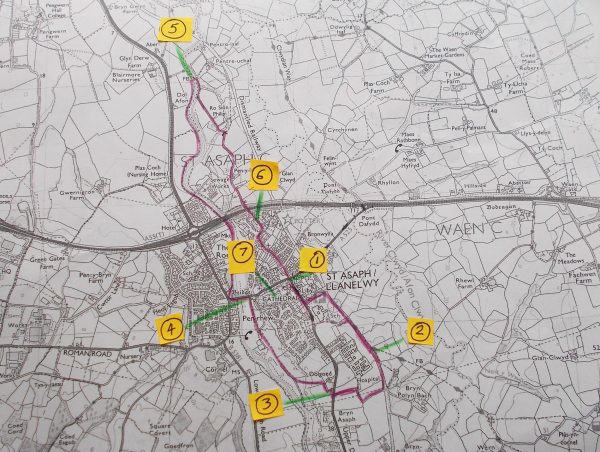
- Leaving the cathedral, turn right onto Denbigh Road, and cross it. Follow signs for the Clwydian Way just before Ysgol Glyn Clwyd. Keep on this tree-lined track as it passes the school playing fields.
- Leave Clwydian Way signs and keeping to lane, turn right at junction, and right again towards new houses, then left to return to Denbigh Road. Cross it, and turn right
- Almost immediately, climb the stile into fields on left, and follow the waymarks that lead you downhill across fields to Afon Elwy. Keep to the riverbank, pass the football ground and reach the road bridge.
- Turn left onto the bridge, cross the river. Then cross the road and turn right to return to the riverbank. Keep to the obvious track – but if you want to shorten your walk there are two footbridges across the river for a swifter return to Llanelwy.
- Take the third footbridge across the river, and turn right along farm track. Continue as it becomes a quiet road, and up a short steep hairpin bend. Cross the bridge over the A55.
- Continue down Mount Road which turns right onto Lon Derw, which it joins briefly before re-joining Mount Road. Note the cemetery on left.
- You re-emerge onto A525 opposite the cathedral. The lovely Translator’s Tearoom Café is behind the cathedral, though you might also be tempted in passing, by Jacob’s Ladder cafe, where the welcome is equally warm.
